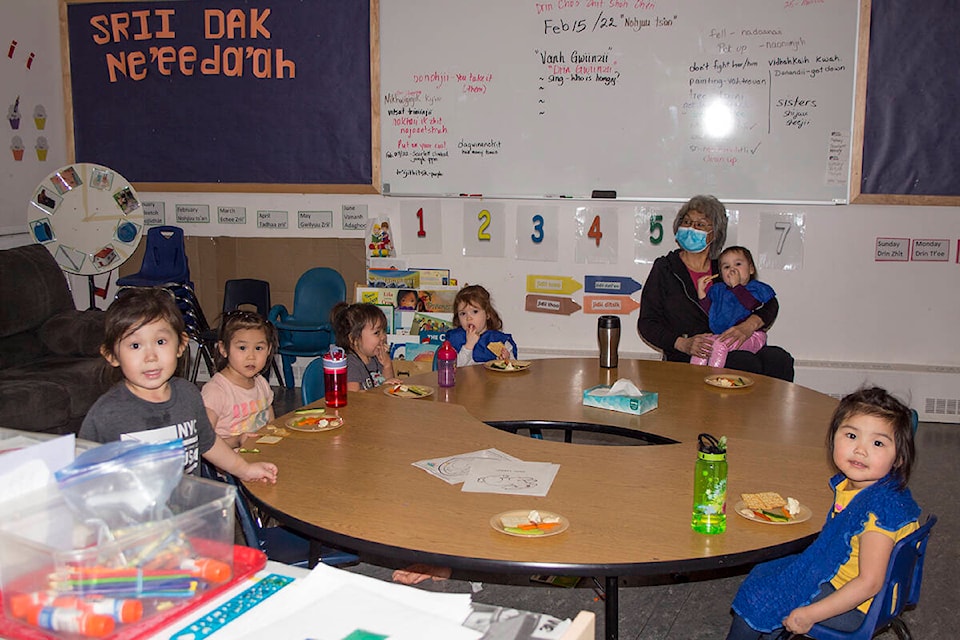Tr’iinin Tsal Ginjik Ge’tr’oonahtan, the Gwich’in Tribal Council’s language nest, has been a success story through its first four years of existence, according to Michelle Wright, the organization’s manager of early learning and language.
“The language nest has been very successful for children in that they are acquiring dinjii zhuh k’yuu – the Gwich’in language,” Wright said. “Parents of the program have observed a noticeable growth in their child’s ability to speak and understand.
”We have one program in Inuvik, with the hopes of expanding to other communities.”
The language nest opened in Inuvik in early 2019. The program operates much like a full-day daycare, but is facilitated in Gwich’in, exposing children to the language at a young age.
“Children ages zero to six are the prime candidates for language immersion,” Wright said, explaining the benefits of the program.
“Traditionally, children were raised in the home where language is spoken,” she added. “The next best thing is language nest programs where children spend eight hours of the day in the language.”
While the language nest has been getting positive results from its attendees and great feedback from parents, Wright and her colleagues still aim to improve operations where they can.
There are two particularly exciting plans in the works for 2024. The biggest initiative this year, she said, is developing a Gwich’in language curriculum and training Gwich’in language teachers for the language nest.
Wright’s department also aims to start offering Gwich’in language classes to the parents of children enrolled at the language nest, “so that children also hear the language spoken in the home” which she called “the long-term goal.”
There are challenges to running the language nest, however. Like many daycares and schools across Canada, one of the main issues is a lack of space. The language nest can only accommodate so many children. That’s particularly problematic in Inuvik, which is one of the larger communities in the NWT, with more than 3,000 residents.
The other big problem, Wright said, is “the number of fluent speakers that work in early learning.”
According to UNESCO’s World Atlas of Languages, the Gwich’in language is “severely endangered,” with only a few hundred speakers remaining in Canada.
Wright hopes that, in time, language revitalization initiatives like the language nest will help change that, at which point a lack of fluent speakers in the education sector may no longer be a problem.
“I am optimistic as long as we all move forward together towards the same goal of revitalizing our language,” she said.
